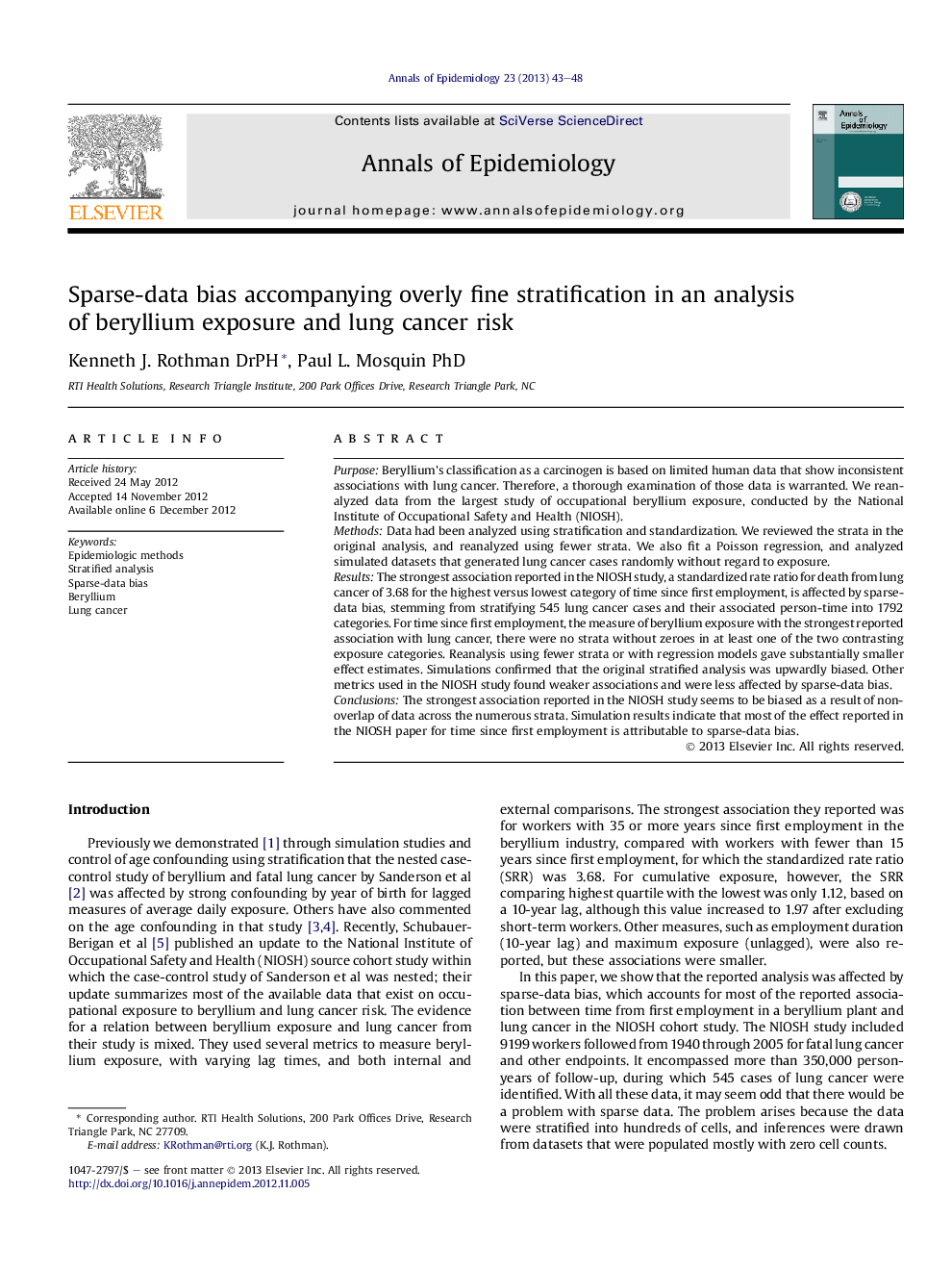| کد مقاله | کد نشریه | سال انتشار | مقاله انگلیسی | نسخه تمام متن |
|---|---|---|---|---|
| 3444243 | 1595270 | 2013 | 6 صفحه PDF | دانلود رایگان |

PurposeBeryllium's classification as a carcinogen is based on limited human data that show inconsistent associations with lung cancer. Therefore, a thorough examination of those data is warranted. We reanalyzed data from the largest study of occupational beryllium exposure, conducted by the National Institute of Occupational Safety and Health (NIOSH).MethodsData had been analyzed using stratification and standardization. We reviewed the strata in the original analysis, and reanalyzed using fewer strata. We also fit a Poisson regression, and analyzed simulated datasets that generated lung cancer cases randomly without regard to exposure.ResultsThe strongest association reported in the NIOSH study, a standardized rate ratio for death from lung cancer of 3.68 for the highest versus lowest category of time since first employment, is affected by sparse-data bias, stemming from stratifying 545 lung cancer cases and their associated person-time into 1792 categories. For time since first employment, the measure of beryllium exposure with the strongest reported association with lung cancer, there were no strata without zeroes in at least one of the two contrasting exposure categories. Reanalysis using fewer strata or with regression models gave substantially smaller effect estimates. Simulations confirmed that the original stratified analysis was upwardly biased. Other metrics used in the NIOSH study found weaker associations and were less affected by sparse-data bias.ConclusionsThe strongest association reported in the NIOSH study seems to be biased as a result of non-overlap of data across the numerous strata. Simulation results indicate that most of the effect reported in the NIOSH paper for time since first employment is attributable to sparse-data bias.
Journal: Annals of Epidemiology - Volume 23, Issue 2, February 2013, Pages 43–48